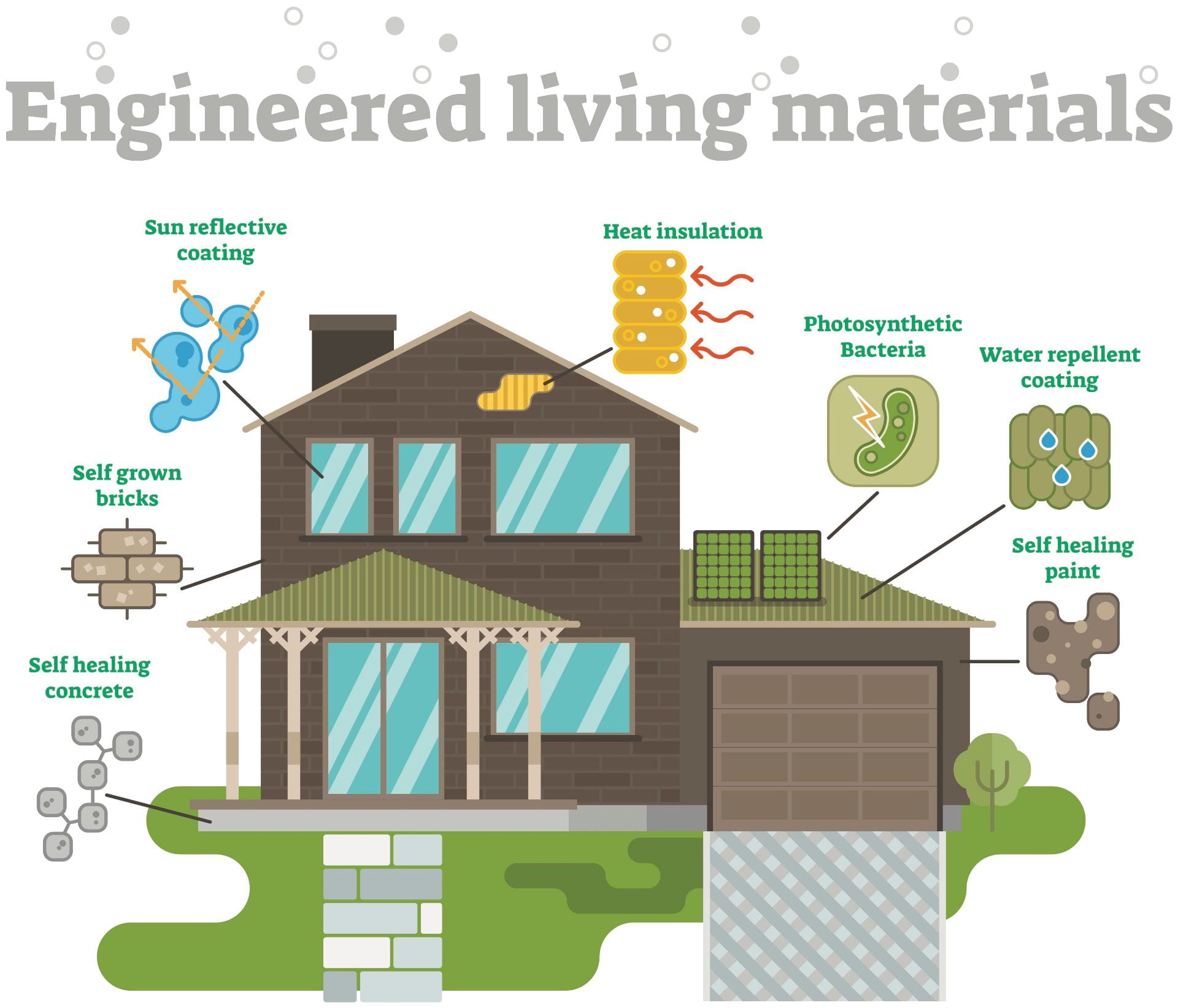
(Image credit: VectorMine)
Wood has been used in building construction for thousands of years, and bones are the hard material that supports our body’s weight. These are examples of biogenic materials and showcase the power of biology to create and manufacture materials of distinct properties. In the coming decades as genetic engineering and synthetic biology matures, we envision the creation of novel materials by living cells and often with living cells as part of the components. Living cells have the ability to regenerate the material upon damages, harness the power from photosynthesis, sense the environment with molecular specificity, and carry programmable responses to environmental change through cellular signaling. More excitingly, living cells and biomolecules are intrinsically built at microns to nanometers scale, which enables access to material properties that only occur at the nanoscale and not in their bulk counterparts. As an emerging field, engineered living materials likely see a wide range of applications in the coming decades including biosensing, tissue implants, environmental remediation, material surface coating, artificial photosynthesis, and more. Additional materials to read include a recent review article and DARPA website, and to know more about what our current projects are in this direction, please feel free to contact Dr. George Lu at george.lu@rice.edu.
